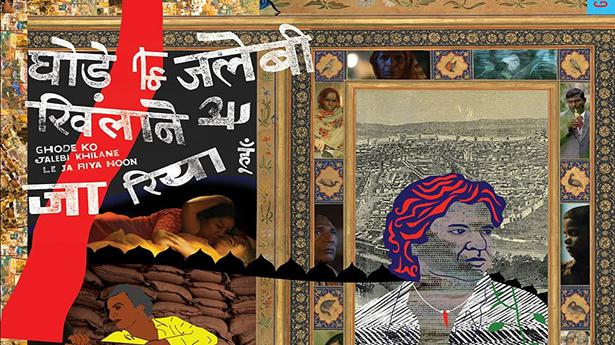A FIR has been lodged against the film’s director Aimee Baruah for allegedly ‘misrepresenting’ Dimasa culture and perpetuating stereotypes against the community
A FIR has been lodged against the film’s director Aimee Baruah for allegedly ‘misrepresenting’ Dimasa culture and perpetuating stereotypes against the community
The director of the 2021 Dimasa-language movie Semkhor, Aimee Baruah, has landed in legal trouble after an FIR was lodged against her for allegedly ‘misrepresenting’ Dimasa culture and perpetuating stereotypes against the community.
The movie has won a slew of awards including the Best Actress category at Toronto International Women Film Festival (2021) and the Special Audience award in the 20 th Dhaka International Film Festival Award (2022). Recently, in the 68 th National Film Awards, Semkhor won under two categories: Special Jury mention and Best Feature Film in Dimasa.
Based on the traditions and livelihood of the ‘Semsas’, a Dimasa community living in the remote area of the Semkhor region in the Dima Hasao district in Assam, Semkhor has drawn the ire of the Dimasa community with many criticising the movie for a stereotypical representation of the Dimasas.
The Dimasa Mothers’ Association has vehemently condemned the depiction of female infanticide by the Semsas in Semkhor, calling it ‘totally untrue and factually incorrect’. In a press note released by the Association, they said that fictional stories against indigenous tribes mustn’t be propagated as factual practices of the Dimasa community. “Such propaganda is disgraceful and may diminish the honour of the indigenous tribes of Assam,” the press note stated.
The All Dimasa Women Welfare Society has expressed ‘strong resentment’ against the movie, calling it a ‘totally wrong projection of the Dimasa customs and the people of Semkhor village’. Objecting to the portrayal of women in Semkhor, the Society said that Ms. Baruah has lied about the practices and customs of the people of Semkhor village, thereby creating a wrong image of the Semsas.
The All Dimasa Students’ Union (ADSU), has also criticised the movie and called out the alleged derogatory nature of Semkhor. Calling the movie a ‘fallacious presentation,’ ADSU condemned the movie for hurting the sentiments of the Dimasa community. “Such ill portrayal of Dimasa’s rich culture and heritage is an attack on our identity and it is aimed to cause emotional injury to our community,” the ADSU said.
The Dimasa Students’ Union Delhi has demanded an apology from the filmmakers and has asked to further ban the screening of the movie. Semkhor has reduced the rich history of the Semkhors, and reduced it to exaggerate, sensationalise, and diverge from the existing practices, the Union said. “This is a potentially dangerous exercise of creative liberties involving the overlooking of certain social responsibilites on the part of the artists,” the press note read.
Diksha Langthasa, a bureaucrat, and hailing from the Dima Hasao district, watched Semkhor recently. She said that there is a gross misrepresentation of the village and that the director, Ms. Baruah, has fabricated the whole premise of the movie and represented them as facts. “It’s really sad that the first feature film in Dimasa language is letting down the very community it seeks to represent,” she said.
Santosh Hasnu, a history professor at Hansraj College, University of Delhi, and hailing from the Dimasa community himself, visited the Semkhor region in 2013. He said the portrayal of the people of Semkhor in the movie as an isolated, self-indulgent tribe is untrue. “The movie reeks of a civilising mission, undertaken much like the British, where the tribes were presented as backwards and dangerous,” he said. Talking about the complicated history of the Semkhor region, he said that the Dima Hasao area was frequently visited by the British. “Semkhor, being located on the hilltop was strategically important for the British to keep an eye on the raiding tribes,” he added.
Mr. Hasnu further said that the interactions between the people of Semkhor and the Britishers have been old, and not like what Ms. Baruah has claimed. “They were in constant contact with the other tribes, with salt being the dominant commodity which was traded.”






